Instructions are in game
Original Creator Credits:
Original Aircraft from
FeiGe3's 767-200ER(PW)
GalacticaAsia's 767-300ER(PW)
Cockpit from
HorizonWXR's Boeing 767-200 Air China
Vertical Stabilizer from
XAircraftManufacturer's XJ767-200ER
Special thanks to JP11 for helping to rip the cockpit
About the Boeing 767 & -200/ER Variant
The Boeing 767 is an American wide-body aircraft developed and manufactured by Boeing Commercial Airplanes. The aircraft was launched as the 7X7 program on July 14, 1978, the prototype first flew on September 26, 1981, and it was certified on July 30, 1982. The original 767-200 entered service on September 8, 1982 with United Airlines, and the extended-range 767-200ER in 1984. She would see several variations in her lifetime including the -200, -300, and -400 models. In addition, several military versions such as the KC-46 Pegasus were developed. At the time of writing, while production of passenger variants have ceased, freighter variants are still in production, with a total of 1,280 767s having been built.
After the launch of the 747 in 1970, Boeing began their 7X7 program with the intent of replacing the 707s and for developing a long range aircraft but with less capacity than the 747. By 1976, a twinjet layout similar to the A300 became the basis for the project. During this time, new demands in the market for a narrow body airliner resulted in two projects being worked on simultaneously, the 7X7 and the 7N7, later known as the 767 and 757. In January 1978, Boeing announced a major extension of its Everett factory which was then dedicated to manufacturing the 747 to accommodate its new wide-body family. One month later in February 1978, the new jetliner received the 767 model designation.
The 767-200 was the original model and entered service with United Airlines in 1982. The type has been used primarily by mainline U.S. carriers for domestic routes between major hub centers such as Los Angeles to Washington. The 767-200 was the first aircraft to be used on transatlantic ETOPS (Extended-Range Twin-Engine Operations Performance Standards) flights, beginning with TWA on February 1, 1985. Deliveries for the variant totaled 128 aircraft. The type's competitors included the Airbus A300 and A310.
The 767-200ER was the first extended-range model and entered service with El Al in 1984. The 767-200ER was the first 767 to complete a non-stop transatlantic journey, and broke the flying distance record for a twinjet airliner on April 17, 1988, with an Air Mauritius flight from Halifax, Nova Scotia to Port Louis, Mauritius, covering 10000 miles/16,200 km. The 767-200ER has been acquired by international operators seeking smaller wide-body aircraft for long-haul routes such as New York to Beijing. Deliveries of the type totaled 121.
Boeing 767-200ER Specs and Info
-Length: 159ft 2 in/48.52m
-Wingspan: 156ft 1in/47.6m
-Height (Tail): 52ft 7in/15.8m
-Max Range: 7,580 miles/12,200 km
-Maximum Occupancy: 250-290 Occupants
-Engines: Two P&W PW4000, Two P&W JT9D, Two RR RB211, or Two GE-CF6
Note: Originally equipped with same engines as the 767-200. Later replaced by more advanced PW4000 and GE-CF6
-Cabin Layout: Seven abreast
Aircraft Type Designators:
ICAO Code: B762
IATA Code: 762

The prototype 767-200, N767BA, at King County International Airport (ICAO: KBFI/IATA: BFI) in Washington, US on June 29th, 1982

The first 767-200 to be delivered to launch customer United Airlines, N606UA, nicknamed 'City of Chicago' at San Francisco International Airport (IATA: SFO/ICAO: KSFO) in California, US on August 31st, 2002.

First 767-200ER to enter service with launch customer El Al, 4X-EAC, at Zurich Airport (IATA: ZRH/ICAO: LSZH) in Switzerland on August 12th, 1992.

Cockpit of a Qantas 767-223ER, VH-EAQ, at Sydney Kingsford Smith Airport ( IATA: SYD/ICAO: YSSY) in Australia on September 17th, 2004.

Cabin of an Omni Air International 767-224ER, N234AX, at Dallas Fort Worth International Airport (IATA: DFW/ICAO: KDFW) in Texas, US on December 30th, 2011.
About TWA (Trans World Airlines)
IATA Code: TW
ICAO Code: TWA
Callsign: TWA
Primary Hubs:
-Hartsfield–Jackson Atlanta International Airport (IATA: ATL, ICAO/KATL)
-Denver Stapleton International Airport (IATA: DEN/ICAO: KDEN)
Note. Stapleton is no longer operational. Closed in 1995
-John F. Kennedy International Airport (IATA: JFK/ICAO: KJFK)
-Pittsburgh International Airport (IATA: PIT/ICAO: KPIT)
-Luis Muñoz Marín International Airport (IATA: SJU/ICAO: TJSJ)-
-St. Louis Lambert International Airport (IATA: STL/ICAO: KSTL)
Headquarters:
-New York City (1930–1931/1964-1987)
-Kansas City, Missouri (1931–1964)
-Mount Kisco, New York (1987–1992)
-St. Louis, Missouri (1992–2001)
-Fort Worth, Texas (April–December 2001)
Years Active: 1930-2001

The TWA 'Twin Globes' Logo, used from 1962-1975

A TWA L-049 Constellation, N86517, nicknamed 'Star of Tripoli' wearing the 'TWA Points The Way' livery at SFO in October 1946.

A TWA Lockheed L-1049G, N7102C, nicknamed 'Star of Windsor' in flight above NYC wearing the 'Jetstream' livery. Photo date unknown.

A TWA Boeing 707, N737TW, wearing 'Twin Globes' livery at Albuquerque International Sunport (IATA: ABQ/ICAO: KABQ) on May 31st, 1969.

A TWA 747-100, N93118, wearing 'Twin Stripes' livery at Chicago O'Hare International Airport (IATA: ORD/ICAO: KORD) on March 5th, 1975. Built as sister craft to the ill fated N93119

A TWA 757-200, N711ZX, wearing the 'Globe' livery, at Baltimore/Washington International Airport (IATA: BWI/ICAO: KBWI) in November of 2000.
Trans World Airlines, Inc. (TWA), was a former United States airline that maintained extensive routes in the United States and to Europe, the Caribbean, and the Middle East. TWA was absorbed by American Airlines in 2001.
TWA was formed on July 16, 1930 as an amalgamation of Western Air Express (founded 1925) and Transcontinental Air Transport (founded 1928). In 1930, both companies merged to form a young TWA, known then as 'Transcontinental and Western Air'. Until 1950, it retained this title until becoming Trans World Airlines.
In 1946 TWA inaugurated international flights between New York City and Paris, quickly expanding by the 1950s to routes through Europe, the Middle East, Africa, and Asia. From 1969 to 1975 it operated transpacific services and was a round-the-world carrier, but in 1975 it suspended such services in a route exchange with Pan American World Airways (Pan-Am). The size of TWA's fleet and her service made her the 2nd unofficial flag carrier of the US.
As the Airline Deregulation Act of 1978 led to a wave of airline failures, start-ups, and takeovers in the United States, Transworld sold TWA to the public in 1984 in the course of defending itself against a threatened hostile takeover. By then TWA was experiencing financial troubles and was in debt. In 1986 TWA bought Ozark Air Lines, Inc., a carrier with routes centered on the south-central United States. Although it continued to operate as usual, the company filed Chapter 11 for bankruptcy in 1992 and again in 1995. TWA's troubles were further exacerbated by the loss of Flight 800 in 1996.
In January 2001, TWA filed for bankruptcy for a third and final time, with American Airlines purchasing the company. TWA continued to operate in limited capacity, though the September 11th attacks proved to be the final nail in the coffin, with American Airlines laying off many TWA staff in the aftermath of the attacks. The airline would operate its final flight on December 1st, 2001 with an MD-83 wearing a special livery, 'Wings of Pride'. The legacy of the airline still lives on, with a hotel in New York, a museum in Kansas City, and a special American Airlines 737 wearing a heritage livery.

N948TW, the MD-83 that performed TWA's final flight from Kansas City to St. Louis.

The American Airlines Boeing 737-800, N915NN, wearing the TWA heritage livery at Phoenix Sky Harbor International Airport (IATA: PHX/ICAO: KPHX) on January 11th, 2015
TWA 756: Pulling the Pin

The incident aircraft, N609TW, at Paris Charles de Gaulle Airport (IATA: CDG/ICAO: LFPG) on July 4th, 1993, 6 years after the incident flight..
(Obligatory 'not a pilot' disclaimer)
Saturday, August 22nd, 1987. San Francisco International Airport.
A TWA Boeing 767-231ER, N609TW, is parked at the gate overnight. The aircraft is four years old having been built in 1983 and is equipped with two Pratt & Whitney JT9D-7R4D engines. During her four years of service, she has accumulated 12,336 flight hours.
During this time parked at the gate, two TWA mechanics perform routine inspections on the aircraft to see if any parts need servicing. During the inspection, the mechanics found that the right main landing gear brake and tires were unserviceable, and subsequently put in a work order. Between 03:00 and 05:00 local time, a large portion of the right landing gear assembly was removed and replaced. Both mechanics had been employed by TWA since the 1960s and had an extensive work record, yet neither had either serviced a 767 until that night.
During the servicing and re-installation of the gear assembly, a critical error is made. In the 767 landing gear system, a pin connects the brake rod and brake torque arm, both critical components of the braking system. During this servicing, the pin was pushed through the brake rod but only partially into the brake torque arm. If the pin is not installed correctly, the torque arm is free to move vertically. In addition, the bolt used to secure the pin is also not installed. This small detail goes unnoticed, and the aircraft is cleared at 08:00.

Digital, simplified example of a typical landing gear. For visual reference, both the torque arm and braking rod can be seen. Structure varies slightly from aircraft to aircraft but this is the general gist


Examples of the main landing gear assembly on the 767
At 10:47 local time, TWA Flight 756 departs from San Francisco bound for St. Louis Lambert International Airport with 181 occupants, 172 passengers, 7 cabin crew, and 2 pilots. The landing gear retract without any sign of a problem. However, during the retraction, the aforementioned pin would've been facing head down. During the flight, the pin gradually falls out from the socket, allowing the aforementioned braking arm to move horizontally, coming to rest on the inside of the landing gear doors, which would in turn prevent the door from opening.
The flight and start of the approach into St. Louis was uneventful, and she began approaching Runway 30L. Just before reaching the outer marker, the crew brings the landing gear down. As the gear came down, the Engine Indicating Crew Alerting System (EICAS) displays a 'Gear Disagree, Gear Doors' accompanied by an aural gear unsafe warning indication. The nose gear and left main landing gear indicators were green, while the right main gear indicator was amber, indicating an issue with the right main landing gear door.
The captain at this point breaks off from the approach, departed the traffic pattern, and recycled the landing gear in accordance with the 'Gear Disagree' procedure. Despite this, the right main gear continued to show an unsafe indication. At this point, the crew radios the TWA maintenance facility in St. Louis to inform them of the issue, where they received instructions to attempt alternate extension techniques to free the landing gear. After this, the flight crew attempted to perform several gravity drop maneuvers to free the right main landing gear. The crew had followed all applicable emergency procedures to free the landing gear to no avail.
The captain at this point decides to divert the flight to nearby Scott Air Force Base (IATA: BLV/ICAO: KBLV) in Illinois due to the more favorable wind conditions and availability of on site medical facilities and crash/fire rescue equipment. The flight attendants were advised to prepare the cabin and passengers for an emergency landing. 30 seconds prior to touchdown, the captain informed the flight attendants and passengers of the imminent touchdown and to assume the brace position.
Shortly afterwards the aircraft then touches down on the runway, making contact with the belly of the aircraft towards the rear section. It continues sliding forward initially straight and level before dipping to the right, the right engine making contact with the runway creating a shower of sparks. The plane veers to the right and goes partly off the runway before coming to a stop in a nose-high, right-wing-low attitude with the right engine supporting the weight of the right wing. The evacuation alarm was then sounded and all doors except the left rear door opened. The slides were inflated and an orderly evacuation followed. When CFR vehicles arrived at the scene, many passengers had already evacuated. Still, the vehicles took position in the event of a fire, though a fire never broke out. Of the 181 occupants, only three minor injuries are sustained, the worst being a sprained ankle sustained during evacuation. The hull of the aircraft sustained substantial damage, and the right engine and right wingtips receiving minor damage. The still stowed right landing gear was undamaged.

Flight 756 having come to a stop.
The aforementioned pin was never found, likely having fallen out of the aircraft at some point during cruise. As a result of the incident, the FAA issued three recommendations, including the issuing of an airworthiness advisory illustrating proper procedure for maintenance on the 767 landing gear assembly, issue an air carrier operations bulletin that would establish procedures where flight crews would be informed of any maintenance performed on items required to be airworthy for flight, and for TWA to review and amend assignment policies, in addition to ensuring that maintenance engineers are properly trained on the specific equipment they are working on.
Despite substantial damage, the aircraft was repaired and returned to service with TWA, continuing passenger service until 1999 when it was converted to a freighter and delivered to Airborne Express. It would be delivered to several other cargo operators before being delivered to Amerijet International on May 25th, 2021. She is still in service at the time of writing.

N609TW, re-registered as N653GT, wearing a DHL livery at Philadelphia International Airport (IATA: PHL/ICAO: KPHL) on November 18th, 2022.
Personal Notes
Well this was tiring... uhhh... there's probably an easier way of doing fuselage slicing but if there is I haven't found it. Not a lot of resources on this one either so I had to do some digging. After doing this I'm thinking of deviating from the normal formula and skipping all the info typing and just... IDK. I also had some people ask me when I plan to make my own aircraft. I have plans for10K that I cannot disclose... but rest assured that I will do something... eventually. Uhhh, yeah, hope everyone is enjoying their summer. Stay safe and happy flying.
-DeadlyDialga
Additional Resources
Specifications
Spotlights
- RicardoACE 1.8 years ago
- Inuyasha8215 1.8 years ago
- TheGoldenEagle55 1.8 years ago
- Pan 1.8 years ago
- Brololxd 1.8 years ago
- JP11 1.8 years ago
- FeiGe3 1.8 years ago
- ChihiroFujisaki 1.6 years ago
- TheFlightGuySP 1.8 years ago
- MAPA 1.8 years ago
- RepublicOfCursedPlanes 1.8 years ago
General Characteristics
- Predecessor (Reworked)B767-200ER[PW]
- Successors 5 airplane(s) +14 bonus
- Created On Windows
- Wingspan 156.2ft (47.6m)
- Length 158.4ft (48.3m)
- Height 52.7ft (16.1m)
- Empty Weight N/A
- Loaded Weight 93,228lbs (42,287kg)
Performance
- Power/Weight Ratio 0.674
- Wing Loading 24.1lbs/ft2 (117.7kg/m2)
- Wing Area 3,866.8ft2 (359.2m2)
- Drag Points 40947
Parts
- Number of Parts 1542
- Control Surfaces 9
- Performance Cost 5,892

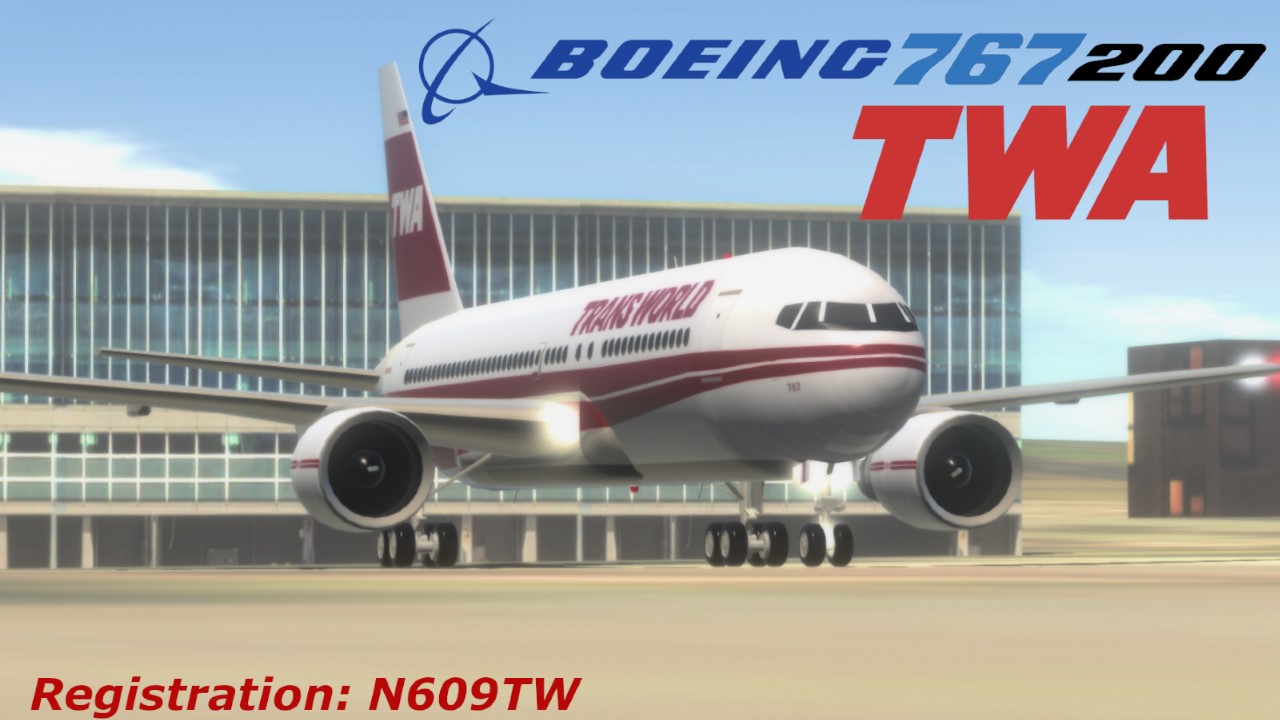
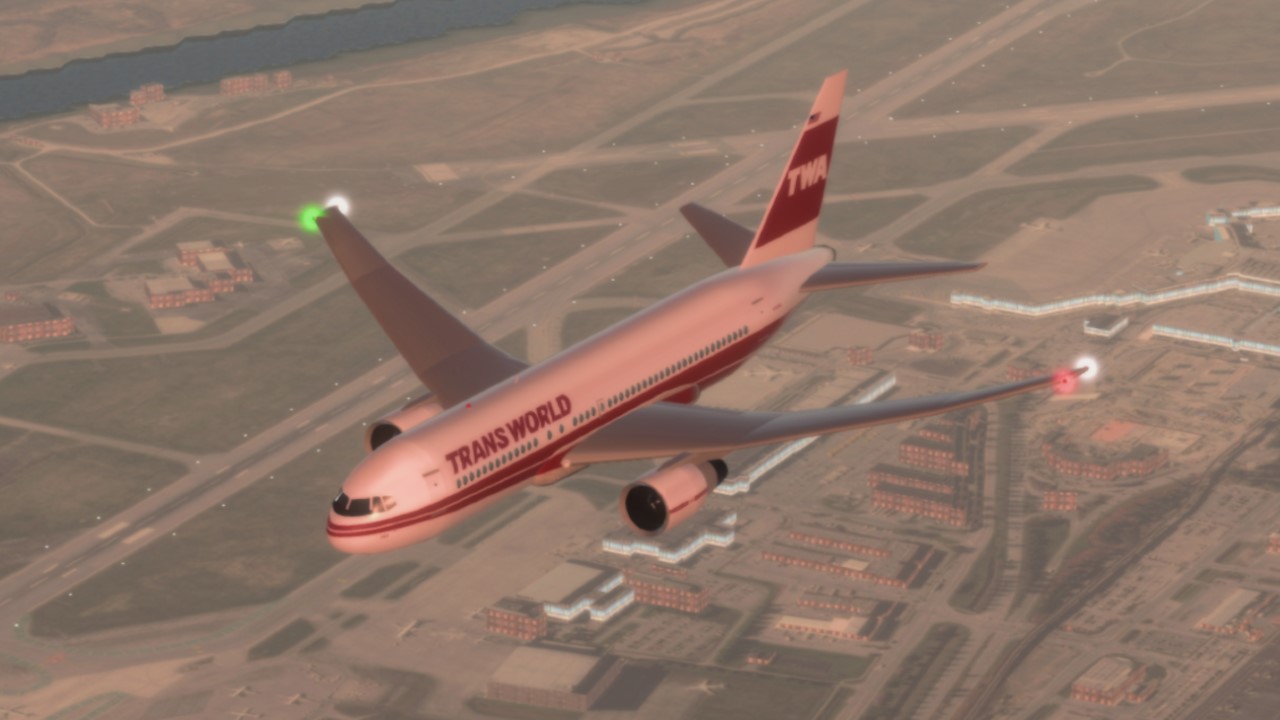
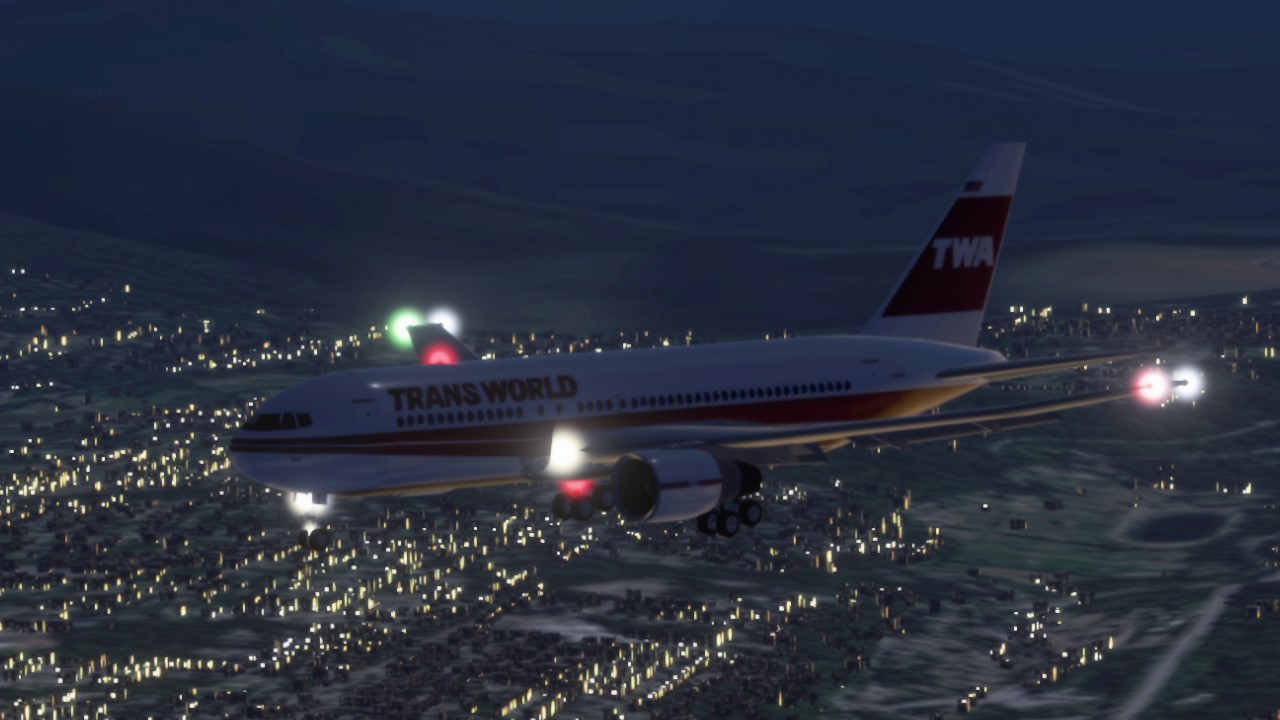
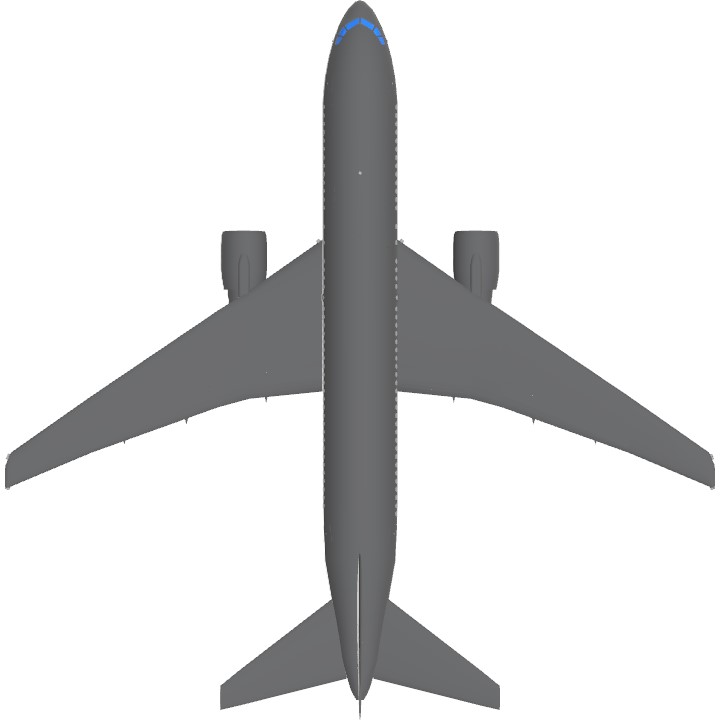

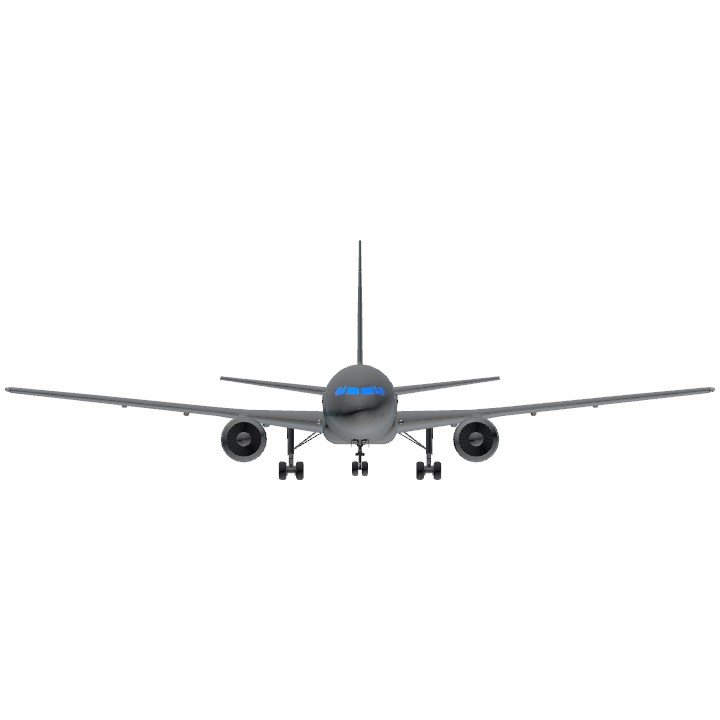
776 Part Version
Original Creator Credits
@XAircraftManufacturer
Original Creator Credits
@FeiGe3 @GalacticaAsia @HorizonWXR
Comments Link
@DeadlyDialga ok then
@Blakeplayz
Appreciate the request but I’m afraid not. The globe livery has some very intricate design choices and replicating that in a way that looked clean and symmetrical would be very difficult. The stripes on the tail would also be difficult to do. I mean I could easily do it, but doing it in a way that allows that rudder to move is very hard.
I also really only do replicas of aircraft involved in incidents or accidents, generally those that are a little less well known. Worry not though, I got another thing cooking up right now as well as plans for a first ‘from the ground up’ project once I hit 10K points. Was hoping my most recent post would get me there but I’m unfortunately still short of that mark :/
Yo can make a Globe livery version of it but this time it's a 767-300ER
@Amogus6079969
That’s why there’s a skip button highlighted at the top of the page. If you don’t wanna read it then don’t, but don’t tell me. If you’re too ADHD to see the skip to comments link at the very top of the description, I can’t help you.
AIN'T READING ALLAT
@Jcbbl10
Got an A300 in American, no 767 tho.
Got any in American Airlines
@DeadlyDialga Sadly true.
@LegendaryPilot
The only thing they were leading the way to was bankruptcy /s
"We're leading the way, TWA..."
--Trans World Airlines , 1985
@Vovanhik
The instructions are listed in game as it says at the top of the description
wheres da instructions?
@Vovanhik lol
@DeadlyDialga Ok
Nvm, im just dumb.
@TWAFlyer1 Hey dude, where to put the file?
@DeadlyDialga That is kinda sad, i may try making a delta livery like the one in my profile image since this has inspired me!
@MobileBuilder21 Wdym?
Where to put the file?!
@MobileBuilder21
I don’t have any plans for the Concorde as of now. Maybe someday, but it’s not on my list.
@OliPershing90mm
There already is